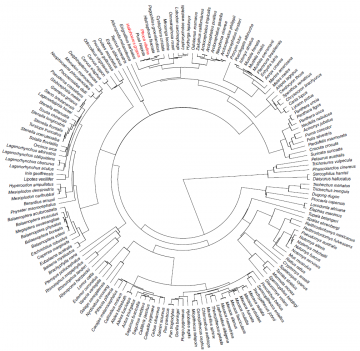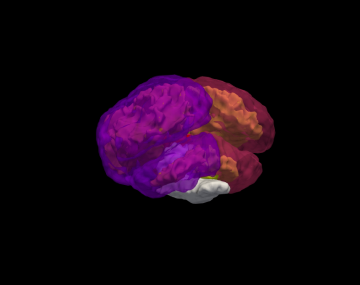- Macro-evolutionary patterns across species: A comparative, developmental perspective on rhythm and vocal learning
-
The biological underpinnings of speech and rhythm have probably arisen via a series of evolutionary events. To understand their evolution in our species and avoid post-hoc explanations only based on one case (humans), it is important to compare similar processes in as many species as possible.
Our cross-species animal work maps different speech-related and music-related features to the mammalian tree of life, testing in what cases either common ancestry or similar environmental pressures provoked similar traits in different species.
In this research line, we empirically test, for instance, whether human vocal and rhythmic flexibility have a joint evolutionary history. Do the diverse criteria for vocal learning and rhythm used by different literatures and authors map to animal capacities? We study the co-occurrence of rhythmicity and vocal learning across mammals, testing for their cross-species association.
{Credit image: Maxime Garcia & Andrea} - Seal : Do seal pups learn to ‘speak’ and develop rhythm?
-
In addition to large-scale, cross-species comparisons, our research focuses on two animal species: harbour seals and grey seals. Practically, seals are like the cats and dogs of the Dutch sea, found all over the coast. Because of their capacity for rhythm and vocal learning, they are also key to test hypotheses about our own linguistic and musical abilities.
This strand of work, focusing on how baby seals learn to produce new sounds, integrates controlled cognitive experiments with ecologically-relevant fieldwork recordings.
We record new-born seal pups and track their vocal learning capacities over development. Our non-invasive behavioural work probes seals’ ability to learn new sounds and the mechanisms to accommodate to another ‘speaker’, as in human turn-taking
This strand targets key similarities and differences in speech development between human babies and seal pups.
{Credit image: Anna Charlotte Kanst Plougmann} - Comparative neurobiology and vocal tract anatomy in seals
-
The mechanisms behind flexible sound production have two main biological bases: the vocal tract and the brain.
While we know relatively well how humans use them to speak, we want to find out whether other animals which such flexible vocal capacities, such as seals, have similar biological adaptations. To this aim, this strand of work seeks neural and vocal tract anatomical similarities between humans and seals.
Practically, we use post-mortem samples from animals which died of natural causes and (noninvasive) neuroscientific techniques. Vocal tract samples can suggest, for instance, which muscles and cartilages underpin flexible sound productions. Brain imaging techniques show how developed and interconnected in the seal brain are the areas which, in humans, are key for speech and rhythm. In addition, noninvasive electrophysiology unveils how the brain forms expectations about rhythmic patterns.
In brief, we look for anatomical and neural precursors of speech and rhythm in seals, by building on work previously done in humans. This line of research looks for the evolutionary precursors, both at the neural as well as the anatomical level, of human speech production.
{Credit image: Nienke Hoeksema} - Rhythm cognition: The biology and culture of human rhythmicity
-
Human culture and biology are strongly linked in many instances. Our sense of rhythm is no exception. In humans, we test how cultural transmission produces the six rhythmic features found across most musical cultures.
We test each of those in humans, using both behavioural and electrophysiological methods. To disentangle the contributions of cultural transmission and cultural variability, we test human perceptual biases towards rhythmic patterns across cultures. This work aims at mapping which features of human rhythm cognition are modulated by culture or cultural transmission.
{Credit image: Alex Khalil} - Mathematical and computational work: Modelling rhythmic and interactive communication
-
Mathematical/computational models, provide a unifying framework for all the empirical strands of research in our group. We develop models to: (1) tackle how behavioural rhythmicity arises from neural oscillations; (2) compare alternative hypotheses against each other before experiments are run; (3) exemplify and predict how synchrony and other group rhythms emerge.
{Credit image: Ravignani, Bowling & Fitch}





Share this page